Xian H-6 Bomber (China)
The beginning stories The H-6 aircraft can be considered September 1957 of the year, when Beijing acquired a license to build Soviet Tu-16 bombers. In 59, China received two reference aircraft, one bomber in disassembled form and one assembly kit. It took a little more than two months to assemble the first aircraft in Chinese enterprises. 27 September 1957, the first Tu-16 of the Chinese assembly took off. In Chinese documents, licensed Tu-16 was designated as H-6.
The deterioration of Soviet-Chinese relations, which began in the late fifties, affected the further fate of many projects. In particular, China has lost the ability to use the Soviet experience in the aircraft industry. However, the PLA Air Force needed modern long-range bombers. In the early sixties, the designers of the Xian Aircraft Company (XAC) organization were ordered to study the existing documentation on the Soviet Tu-16 aircraft and to develop a project that would allow building similar equipment on its own.
Around 1964, XAC began preparations for building the first aircraft of the new model, called the H-6A. In fact, the new Chinese bomber was a slightly modified version of the Tu-16, completely based on components made in China. So, in view of the impossibility of purchasing Soviet engines, China had to start producing its own Xian WP8 turbojet engines. These engines were a version of the Soviet RD-3M used on the Tu-16. Similarly, the situation with other nodes and assemblies.
The first H-6A, built using only Chinese components, took off at the end of December 1968. Soon began the serial construction of a new type of bombers. Accurate information about its volume is not available. According to various estimates, until the mid or late seventies, XAC built at least 150-200 aircraft of the new model. Most of this equipment has been repeatedly upgraded in the future and is still used by the Chinese Air Force.
Due to the specific "origin" of the Chinese bomber H-6A in its characteristics almost did not differ from the Soviet prototype. It had a total length of 34,8 m, a wing span of 34,2 m and an area of 167,55 square. The empty mass of the aircraft was 38,5 T, the normal take-off was 72 T. The maximum take-off weight reached 75,8 T. The fuel tanks located in the wing and fuselage contained up to 33 T of kerosene. Two WP8 turbojet engines for 93,1 kN provided the bomber with a maximum speed of up to 990 km / h and cruising at the level of 785 km / h. The practical ceiling was 12 km, the flight range was up to 4300 km. The combat radius did not exceed 1800 kilometers.
The crew of the Xian H-6A bomber consisted of six people. For self-defense the plane had seven automatic guns Type 23-1 caliber 23 mm. They were placed in pairs on remote-controlled turrets on the upper and lower parts of the fuselage, as well as in the tail. In addition, there was one course gun installed in the nose. The first modifications of the H-6 bomber could only carry bomb weapons. Normal load was 3000 kg, maximum - 9000 kg. Initially, the armament of the bombers consisted only of free-fall conventional bombs. Further H-6A became carriers of nuclear bombs.
The similarity of the characteristics with the parameters of the base Tu-16 was due to their similar technical appearance. H-6 had a large lengthening fuselage with two crew cabins (bow and tail), a cargo compartment, fuel tanks and compartments for various equipment. On the sides of the fuselage were two nacelles, the characteristic curved shape of which was dictated by the so-called. the rule of squares. The aircraft had a swept wing with chassis fairings mounted on the center section. In the tail part there was a large keel and a stabilizer mounted on it.
The Xian H-6A had a long range by Chinese standards, which, combined with the use of atomic bombs, allowed the Chinese command to declare it a strategic bomber. The emergence of new species weapons, first of all guided missiles, made it possible to maintain a similar classification of the aircraft and to modify the strategy of its combat use accordingly.
Shortly after the H-6A bomber, several of its specialized modifications were created. For example, the H-6B aircraft, instead of bomb armament, was equipped with aerial cameras for reconnaissance. Modification of the H-6C was a basic H-6A with an updated set of electronic equipment. In particular, modern means of electronic warfare with enhanced characteristics were used.
In the early eighties, it became aware of the completion of work on a new modification of the bomber. Aircraft H-6D was intended to equip the naval aviation of China and had to carry the appropriate weapons. The H-6D did not install a number of equipment typical of land bomber. At the same time, they were equipped with two under wing beams for anti-ship missiles HY-2 and a number of equipment necessary for their use.
The HY-2 anti-ship missile was another Chinese version of the Soviet Termite P-15 with altered characteristics. An ammunition with a length of 6,55 m with a launch weight of more than 2 t could deliver a combat unit with a weight of 150 kg to a range of 513 km. At the initial part of the flight, the missile was guided to the target using an inertial system, after which the active radar homing head was activated.
The appearance of a long-range missile carrier capable of hitting enemy ships at distances greater than 100-120 km has greatly increased the capabilities of China’s naval aviation. New aircraft H-6D could provide effective protection of the coast of the country from enemy ships.
Also in the eighties, China created several other modifications of the H-6 bomber. According to reports, by this time the production of new aircraft was discontinued, as a result of which the existing bombers were re-equipped according to new designs.
The H-6E modernization project implied the installation of new electronic equipment on existing H-6A aircraft. Bombers retained the possibility of carrying conventional and nuclear weapons, and also received new radar, new EW systems, communications and other equipment. Similarly, the project looked like H-6F, developed in the late eighties. In the course of the next repair and modernization of this project, the aircraft received new navigation equipment based on inertial and satellite systems.
In the early nineties, new versions of the H-6 bomber, which received the possibility of using missile weapons. Aircraft H-6G and H-6H received underwing holders for cruise missiles. In this case, the cargo compartments in the fuselage were given for the placement of some equipment and additional fuel tanks. The missile carriers of the new modifications could carry anti-missile missiles YJ-62 or C-301, as well as air-to-ground ammunition KD-88. Depending on the type of ammunition and their size, bombers can carry from 2 to 6-7 missiles.
In 2011, the PLA Air Force adopted the newest version of the H-6 rocket carrier - the H-6K. This aircraft has a number of important differences from its predecessors. For the first time in a long period of time, the bomber of the H-6 family received new engines. As the power plant on the H-6K used two engines D-30KP-2 with a load of 118 kN. External differences from previous aircraft aircraft are in larger air intakes, as well as in the absence of a glass navigator cabin in the nose, instead of which there is a large radio transparent radome radome.
The use of new engines and avionics has improved the characteristics of the rocket carrier. According to reports, due to greater automation, the crew of the aircraft has been reduced to 4 people. Combat radius increased to 3000 km. The maximum combat load weight is now 12 t. Under the wing of the H-6K bomber there are six pylons for suspending CJ-10A cruise missiles. These products with a turbojet engine can reach speeds of up to 1000 km / h and deliver a nuclear or high-explosive fragmentation warhead up to 2500 km from the launch point.
According to reports, since the end of the last decade, a number of bombers of the H-6 family have been re-equipped in accordance with the H-6K project. The exact number of these machines remains unknown. Moreover, China is in no hurry to disclose accurate information about the quantitative and qualitative composition of its long-range aviation. For this reason, it is necessary to use exclusively different estimates, made on the basis of available data. According to the most common version, about two hundred H-6 bombers of all types were built. To date, no more than 100-120 machines remain in the Chinese armed forces. Of these, about 80 is operated by the air force and the order of 30 - naval aircraft.
The number of aircraft of one or another modification was not announced. Probably most of the available H-6 refers to late modifications that can carry various types of rocket weapons. The naval forces must have missile carriers of the model H-6D or later technology, carrying anti-ship missiles. Earlier it was reported that in the course of converting existing equipment to aircraft type H-6K new equipment and weapons will get about 20 machines. There was no official confirmation of this.
Until a certain time in the PLA Air Force, there were no refueling aircraft capable of increasing the combat radius of combat vehicles. Geographical proximity to the main potential adversaries allowed the use of existing equipment from existing aerodromes without additional refueling in flight. However, over time, strategies have changed, and as a result, the air force needed refuelers.
The existing H-6 bomber was chosen as the basis for the new technology; its characteristics made it possible to "serve" modern and future front-line aircraft. The development of the air tanker H-6U (alternative designation HY-6) started in the late eighties. In the early nineties, new equipment began to enter the army. The Soviet Tu-16 was equipped with a wing-to-wing refueling system. The refueling aircraft was supposed to release a hose from the wingtip, which was connected to a connector on the wing of a refueling aircraft. This method was too complicated and not suitable for meeting the requirements of the Chinese Air Force. For this reason, the tanker H-6U received a hose-cone refueling system.
Under the wing of the tanker H-6U there are two filling units RDC-1. Each of them has a hose with a length of several tens of meters with a cone at the end, as well as a release mechanism. The procedure for refueling is as follows: the tanker plane releases the hose, after which the aircraft being refueled must get into the cone by the fuel receiver. Next is the transfer of fuel and uncoupling. Due to its own wing and fuselage tanks, as well as the capacity in the cargo compartment H-6U can carry up to 18,5 tons of fuel. Thus, in one flight, he is able to refuel up to 3-4 airplanes, depending on their type.
The H-6U aircraft were converted X-NUMX bomber H-12 previous modifications. This technique entered the air force units. To equip the naval aviation, a modification of the HY-6D tanker was created, the basis for which was the H-6D missile carrier. This approach to the manufacture of new technology to a certain extent simplified the joint operation of bomber and tankers. The needs of the Navy were limited to only six air tankers.
The H-6 family of aircraft became the main long-range bombers of China for several decades. In addition, these machines are interested in several foreign countries. In the mid-seventies, Egypt wished to order a number of such aircraft in addition to the Soviet-made Tu-16. The export version of the H-6 received the designation B-6. Egyptian Tu-16 and B-6 operated until the end of the nineties. The last of these bombers produced its life and was decommissioned in 2000.
In the eighties, a similar order came from Iraq. Official Baghdad decided to acquire four H-6D (export name B-6D) with anti-ship missiles in addition to the eight available Tu-16. These planes were supposed to be used to protect the coast from enemy ships. However, all four B-6Ds were destroyed in 1991 during the Gulf War. The entire Iraqi Tu-16 fleet was “finished off” in 2003.
A few years ago, China completed the creation of another modification of the long-range bomber H-6. Aircraft H-6K in a relatively small number will continue to serve in the coming years. What will be the future of Chinese long-range aviation, can not be said for sure. In recent years, rumors about the development of a new strategic bomber have regularly appeared, which should replace the existing H-6, but so far they have not received any confirmation.
It is quite possible that Chinese specialists are already working on a new long-range bomber, which in the future will replace the outdated physically and morally H-6. Nevertheless, we cannot exclude another scenario, in which the Xian Aircraft Company or another aircraft building organization in China is working on the creation of another modification of the well-deserved "old man" H-6. It should be remembered that the bombers of the H-6 family have long been discontinued and the technique of new modifications is created by retrofitting existing machines. Any equipment cannot be operated endlessly, and the modernization potential has its end. When exactly the Chinese military decide that the H-6 bombers must give way to new aircraft - time will tell.
On the materials of the sites:
http://militaryfactory.com/
http://sinodefence.com/
http://airforceworld.com/
http://ausairpower.net/
http://arms-expo.ru/
http://airwar.ru/
http://globalsecurity.org/
http://aviadejavu.ru/
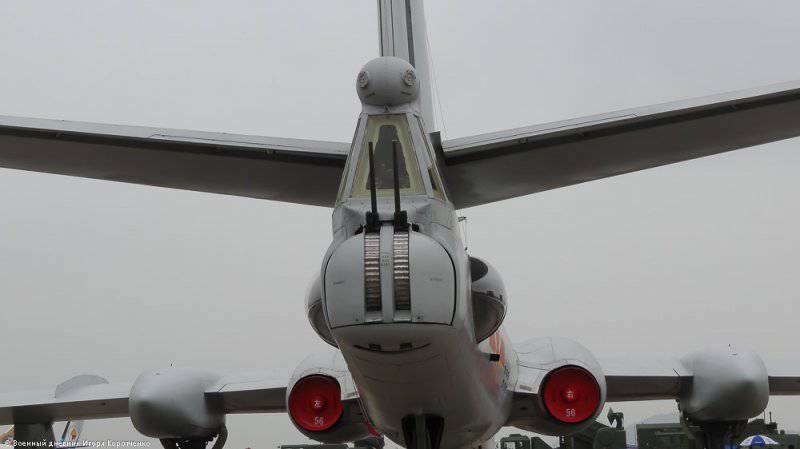
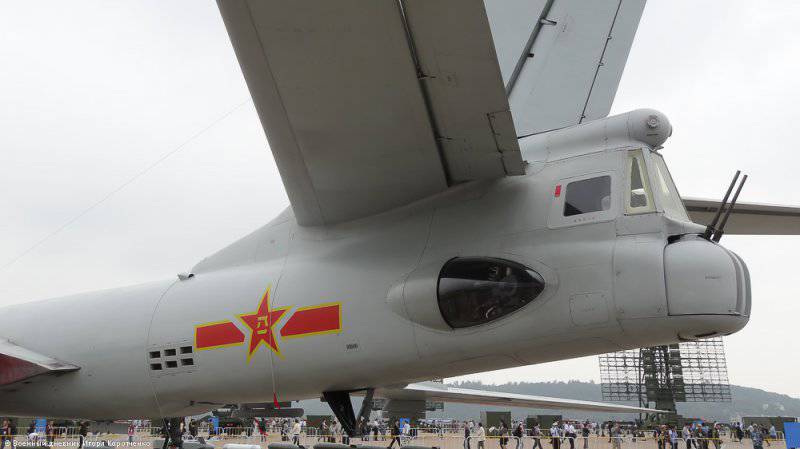
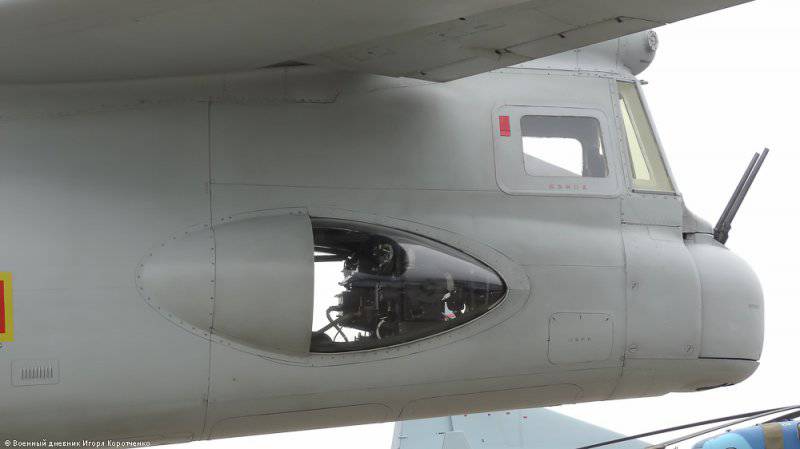
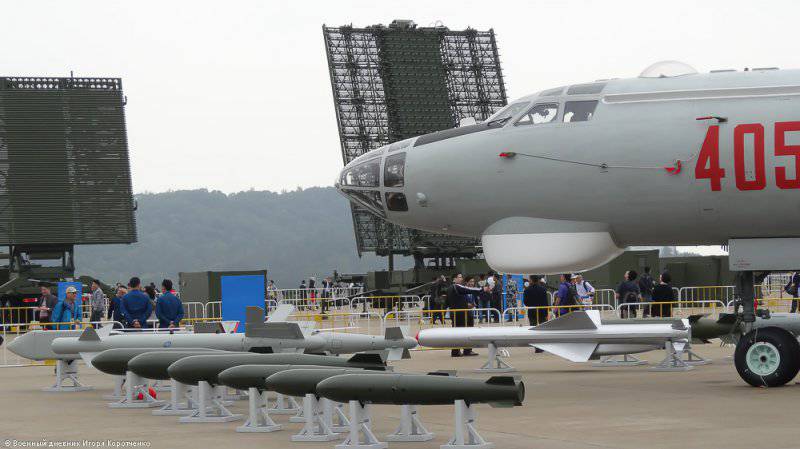
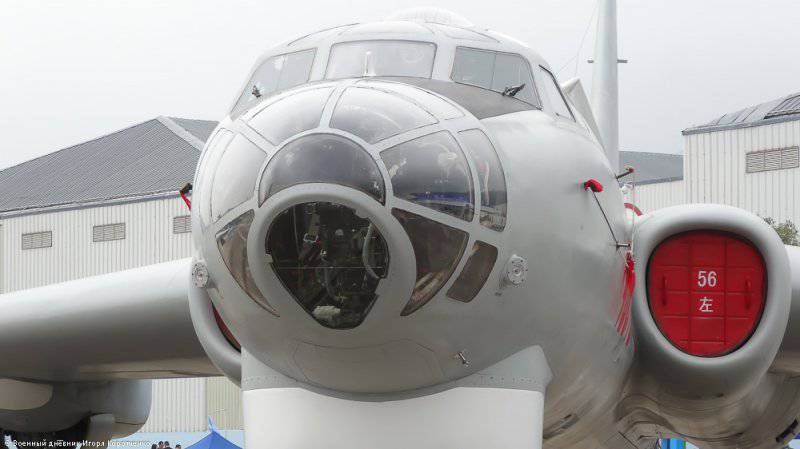
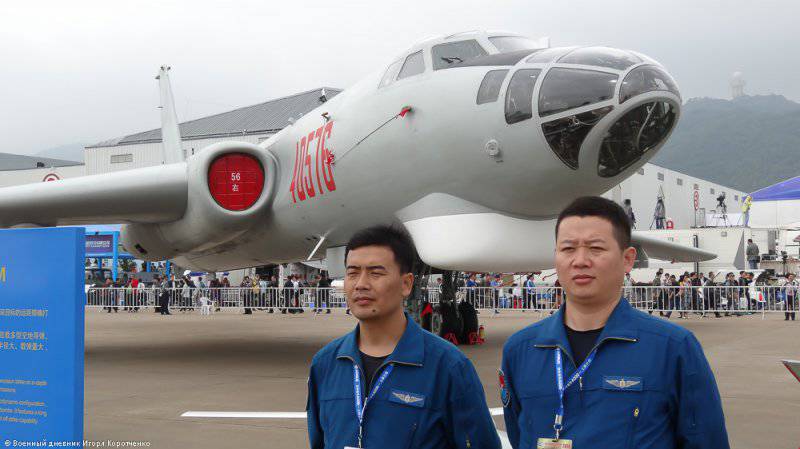
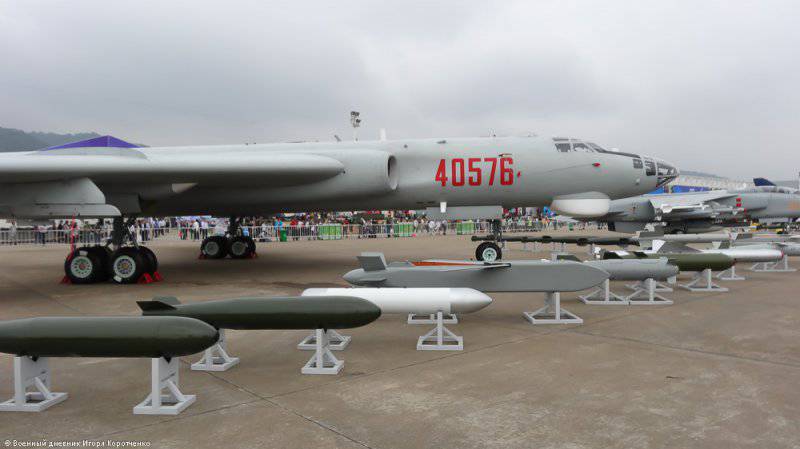
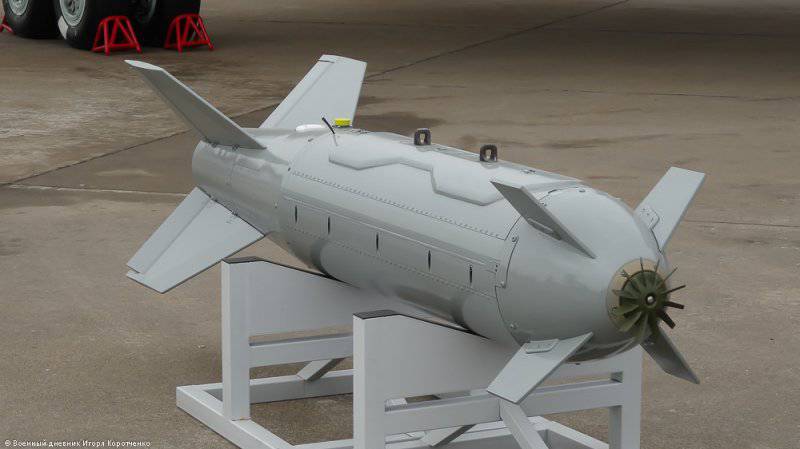
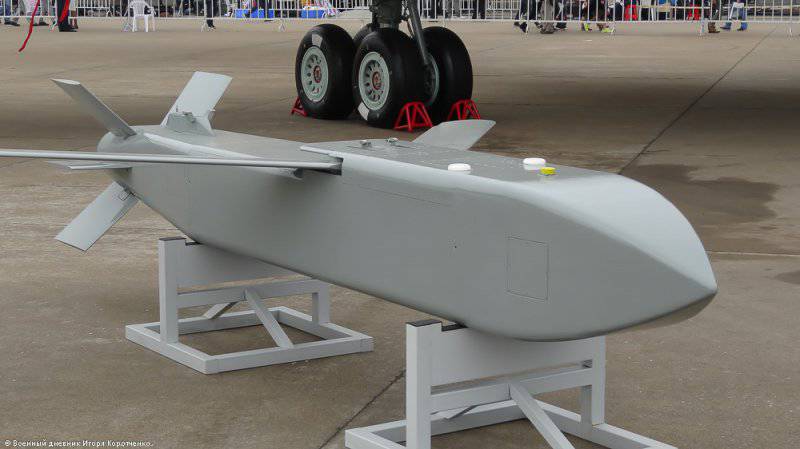
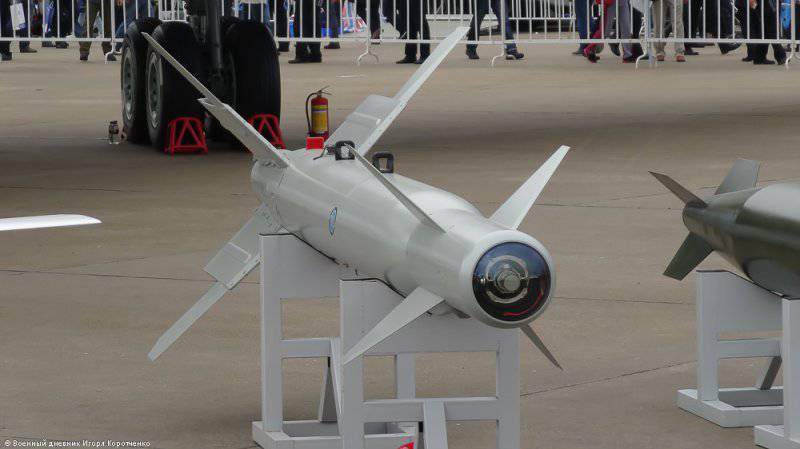
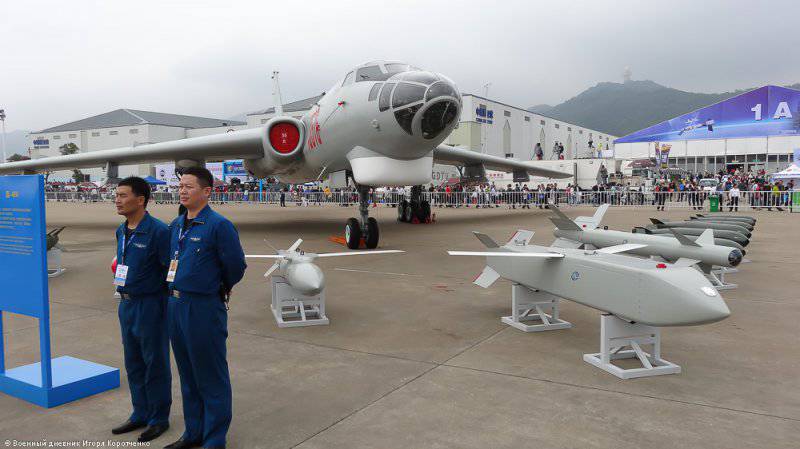
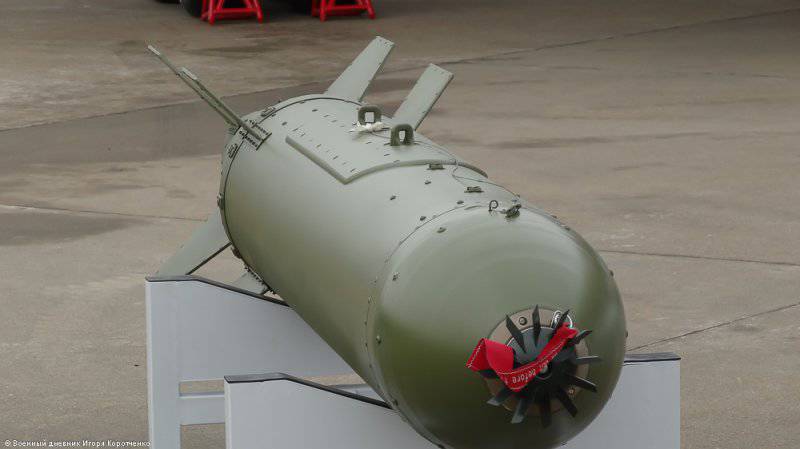
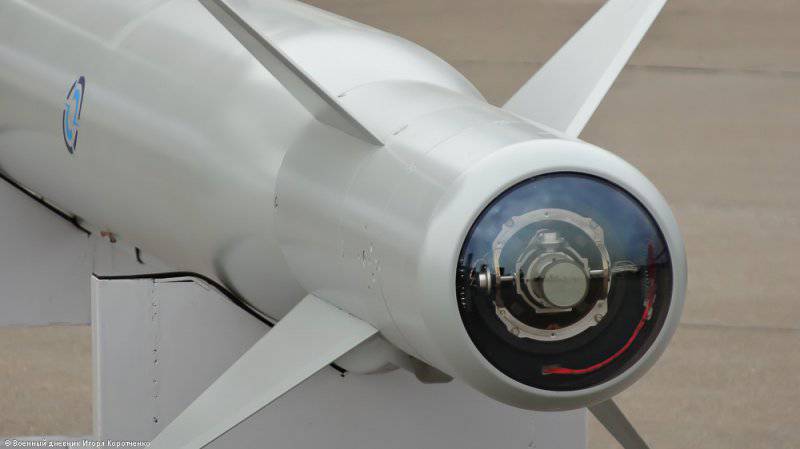
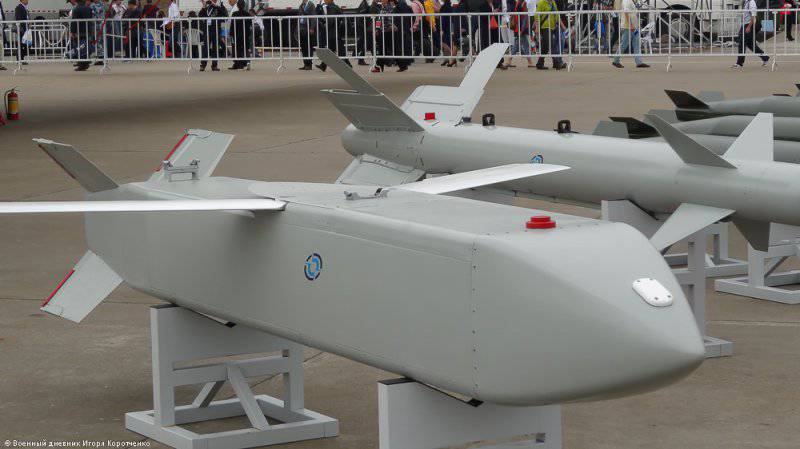
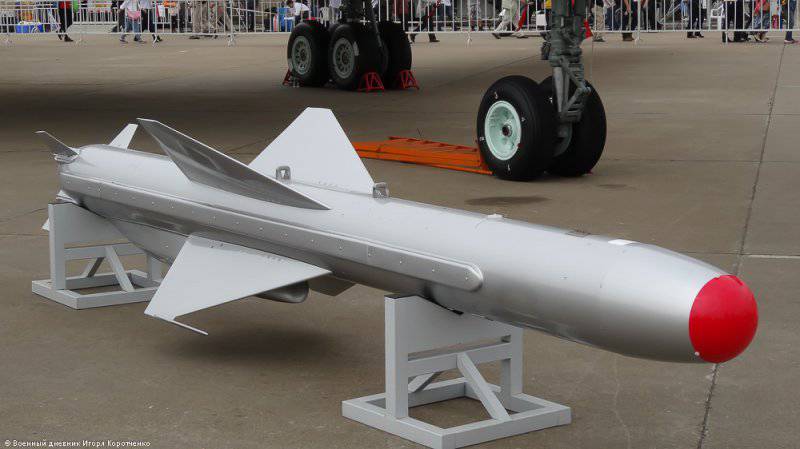
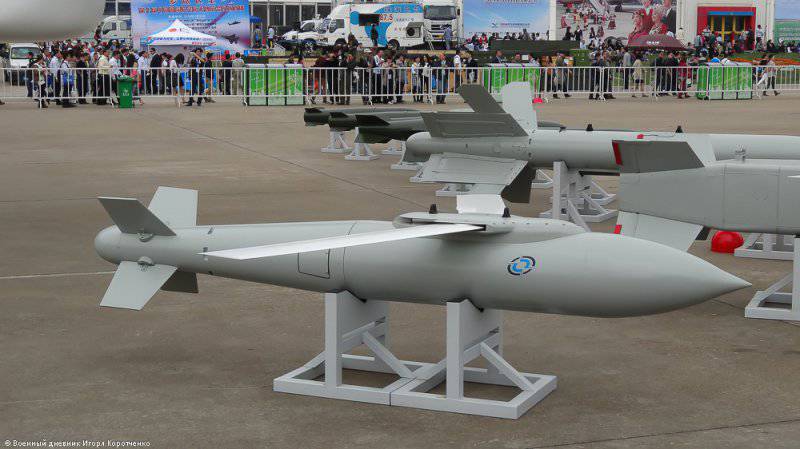
Information